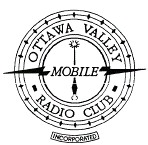This article summarizes my thoughts of working for QSOs through Fengtai OSCAR-118 that is listed in the AMSAT Two Line Elements as FO-118 (Ref 1 provided below). It was launched on Friday, December 9, 2022 joining 36 other OSCAR satellites being tracked by AMSAT to provide current operational states of satellites (Ref 2). The spark in this article’s creation was Rambler’s Editor, Alan Hotte, VA3IAH request to sharing my experience. Alan, thank you.
To begin, my equipment for QSOs through FO-118 (Ref 3,4) and other satellites consists of: Windows 10 laptop; SatPC32 software (Ref 5); GoSatWatch for iPhone (Ref 6); Icom IC-9700 (Ref 7); 16.7 M (55’) of RG-213 coaxial; Digiwav antenna Rotator (Ref 8); and handcrafted $4.00 Ham Radio Satellite Antenna (Ref 9) at 2.5 M (8’) angled up at 20 degrees.
The station’s largest limitation is the residential antenna restrictions. This effectively removed nearly 180 degrees of receivable azimuth. What I do have allows a receivable satellite pass from 328 Degrees, clockwise, to 140 Degrees. The stations largest advantage, other than being in the house, is the IC-9700 dual VFOs which allows me to meet FO-118’s VHF/UHF mode FM transponder settings without a second radio. These settings required VFO 1 on the FM transmission uplink of 145.925 MHz and VFO 2 on the FM reception downlink of 435.600 MHz. For most and for me, the initial reward in having this setup work is hearing your own voice being transmitted back to Earth from the 3200 KM (2000 Mile) Low Earth Orbit trek up and back down.
In deciding to work satellites, that now includes FO-118, there were 2 main challenges. The first was having to improve my programming capabilities for the IC-9700 and the Doppler adjusting software of SatPC32. For the IC-9700, reprogramming provided a reduction from 3 to just 1 Terminal setting. This resulted in a welcomed simplification. It was also successful in establishing presets to operate 5 different software programs which included SatPC32.
For the SatPC32 software, the programming of the DOPPLER.SQF file included a learning curve. This was key in my immediately hearing of the FM signal with the right audio pitch for the entire pass that eliminated my need of dialing around to find the signal. The second challenge in wanting to work FO-118 was being able to add it to my existing goal of completing QSOs through 19 different satellites. This goal was kicked-off with my first QSO through the International Space Station’s FM transponder in 2022.
In preparing the radio, antenna control, and software for the FO-118’s QSO attempt, I was curious as to how good the new satellite’s transponder audio would be. To help determine this, I employed the IC-9700 audio recorder during 2 different satellite QSOs. These QSOs were through FM transponders aboard the FO-118, launched in 2022 with WA4VOC on December 24th and the AO-91, launched in 2017 with N2FYA on December 31st. Both were received with an RST of 59 during part of each QSO. The distinguishable difference was that FO-118 provided a higher received audio clarity (less white noise). I state “during part of each QSO” as my Yagi antenna’s fixed vertical position does not adjust with the satellite’s changing of vertical and horizontal emissions as it travels over. The 2 recorded audios of the AO-91 QSO are provided for your experience of satellite contact. Both were recorded by Icom IC-9700’s of mine and N2FYA (Ref 10).
Beyond my QSO through FO-118’s FM transponder I find the satellite still holds many aspects I may explore. For the current state of FO-118’s transponders that you may wish to consider, see the FO-118’s satellite user manual (Ref 4 below), which identified:
- CW telemetry beacon, 435.57 MHz, RF power 20 dBm, CW rate 22 WPM (active)
- GMSK telemetry, 435.650 MHz, RF power 25 dBm, Data rate 4800/9600 bps (active)
- VHF/UHF Linear transponder, uplink 145.820 MHz, downlink 435.540 MHz, RF power 23 dBm, bandwidth 16 KHz, spectrum inverted (active)
- VHF/UHF FM transponder, uplink 145.925 MHz, downlink 435.600 MHz, RF power 23 dBm, bandwidth 16 KHz (active)
- HF/UHF Linear transponder, uplink 21.435 MHz, downlink 435.505 MHz, RF power 23 dBm, bandwidth 15 KHz, spectrum normal (active)
- 3 X visible light band space cameras (not yet active)
To conclude, my experiences in working towards and completing a FO-118 QSO were very enjoyable. The required preparation of radio and software was moderate for my basic computer/software knowledge level.
Overall, it was a welcomed learning challenge with the joy of accomplishing a QSO through FO-118 that raised my fist in the air with a throaty YYYEEESSSS!!!
Keep sparking it up,
73, Shaun Lumley CD, VE3VHU
Reference (Ref):
1. https://www.amsat.org/keplerian-elements-resources/
2. https://www.amsat.org/status/
3. https://amsat-uk.org/tag/cas-5a/
4. https://ukamsat.files.wordpress.com/2022/12/cas-5a-amateur-radio-satellite-users-manual-v1.0.pdf
5. https://www.amsat.org/product/satpc32-by-electronic-download/
6. https://apps.apple.com/us/app/gosatwatch-satellite-tracking/id300546718
7. http://www.icomamerica.com/en/products/amateur/hf/9700/default.aspx
8. https://www.grainger.ca/en/product/HDTV-ANTENNA-ROTATOR/p/HOMAR500
9. http://www.amateurradio.bz/4_dollar_satellite_antenna.html
10. N2FYA - Callsign Lookup by QRZ Ham Radio
By: Shaun VE3VHU
Appears in: Rambler Vol. 65, Issue 5 January 2023


